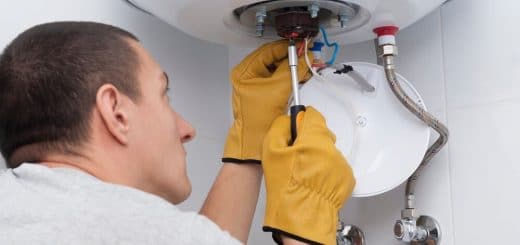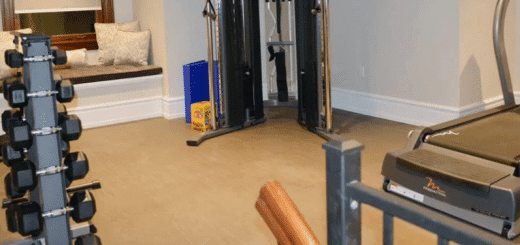Types of Damage Not Covered by Homeowner’s Insurance
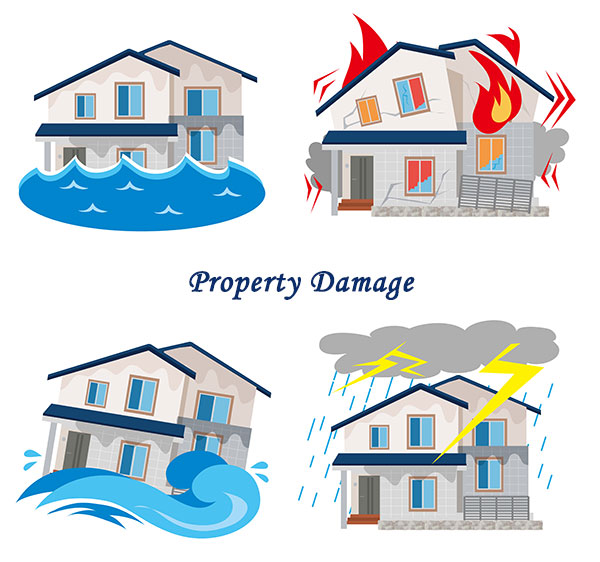
You need an efficient way to protect your property? Consider getting adequate home insurance.
Most people see their homes as a sanctuary from the outside world, a cozy haven where they can relax and feel at ease. The home is a place of comfort and security; a place full of cherished items and meaningful objects whose value goes far beyond their market price; a place that is designed and decorated to reflect the occupants’ personalities and aesthetic tastes. So, it’s only natural that people want to keep their “sweet homes” safe and sound, no matter what. However, there are many circumstances beyond our control that can inflict damage to a home and ruin its excellent condition. That’s why so many Americans get a home insurance policy in an attempt to provide some protection for their properties and to ensure their peace of mind.
A homeowners’ insurance policy cannot literally protect your home from the whims of the weather or the actions of ill-intentioned people, of course. However, it can help you pick up the pieces and get your life back on track after a disaster. If you have adequate coverage, your insurer will reimburse you for your losses, providing the means to pay for the restorationRestoration is the process of returning a property to its pr... More of your damaged property.
However, you should be aware of the fact that standard home insurance policies don’t cover all types of damage – floods, earthquakes, and certain other perils require special coverage that comes at a higher cost. So, in order to minimize your exposure to loss, you may want to consider adjusting your insurance plan. To do so, you need to know exactly what regular homeowner’s insuranceHomeowner’s insurance is a policy that provides financial ... More does not cover.
Floods
Damage resulting from burst pipes and overflowing water from your plumbing system is usually covered by standard home insurance policies. However, loss from “rising surface water” occurring outside your home, such as overflowing rivers or torrential rain, is not covered.
So, if you live in a flood plain (near a creek, lake, or any large body of water), you may want to consider purchasing additional flood insurance. You can obtain a flood insurance policy through the National Flood Insurance Program or a private insurance company. Find out more useful information on the topic here.
Have in mind, though, that new policies take effect after a 30-day waiting period.
Sewer Backups

FloodingFlooding is the overflow or accumulation of water in areas t... More from overflowing rivers or torrential rain is not covered by standard homeowner’s insurance policies.
When a sewer backs up into a home, it can cause substantial damage to floors and walls, as well as to furniture and electrical appliances. Besides, sewageSewage is wastewater containing biological and chemical cont... More backup poses a great threat to the health and safety of the inhabitants, as it contains harmful bacteria that can spread infectionInfection is the invasion and multiplication of harmful micr... More or disease.
Standard homeowner’s insuranceHomeowner’s insurance is a policy that provides financial ... More, however, does not cover sewer backups. In most cases, you will be able to get extra insurance for this type of damage as an endorsement to your policy. In fact, sewer-backup damage can be covered for an additional premium of just $40 to $50 per year.
Mold
Homeowner’s insuranceHomeowner’s insurance is a policy that provides financial ... More policies generally offer limited or no coverage for moldMold is a type of fungus that grows in damp or humid conditi... More damage. If moldMold is a type of fungus that grows in damp or humid conditi... More growth has appeared due to excessive moisture resulting from long-term leaks, poor home maintenanceMaintenance is the routine care, inspection, and repair of a... More, construction defects, or naturally occurring floods, you will not be reimbursed for your losses. However, your policy may cover mold remediation costs if the problem has been caused by a sudden leak in the plumbing system (provided that you take immediate action to fix the problem and prevent further damage).
Earth Movement
The land under your home is excluded from home insurance coverage. Therefore, you will not be compensated for damage associated with “earth movement” – earthquakes, landslides, and sinkholes (sudden gaps that occur when the land settles or collapses because of large underground cavities, created when groundwaterGroundwater is water that exists beneath the earth’s surfa... More dissolves the rock beneath the surface and carries bits of it away, forming large pores and cracks in the bedrock).
To get adequate coverage for these disasters, you need to purchase a separate policy (strongly recommendable if you live in an earthquake-prone area). Insurers in Florida and Tennessee, however, are required to provide coverage for sinkhole damage as it is very common in these states.
Infestations
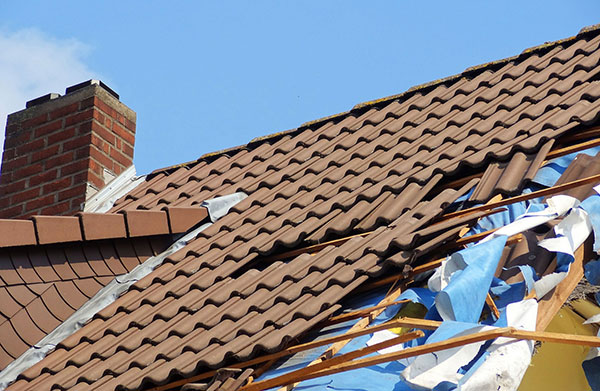
When choosing a homeowner’s insurance plan, find out exactly what different policies cover, especially if you live in a risk-prone area.
Insects (termites, bedbugs, etc.), rodents (mice, rats, squirrels, etc.) and other vermin can cause severe damage to support beams and other wood features, slowly devastating your home. However, this type of damage is not covered in a home insurance policy, as getting rid of infestations and fixing the damage left behind is considered to be the responsibility of the homeowner as a part of the regular home maintenanceMaintenance is the routine care, inspection, and repair of a... More process.
Damage from Pets and Domestic Animals
Your homeowner’s insuranceHomeowner’s insurance is a policy that provides financial ... More will not pay for restoring household items or structural elements damaged by pets and other animals residing on your property.
When it comes to dogs, in particular, matters are even more complicated. Most insurance companies provide liability protection in case your dog bites another person, but don’t cover damage to your property (chewed or scratched couches, furniture legs, rugs, etc.) Have in mind though that hostile or dangerous dogs may not be covered at all or could even prevent you from getting approved for a policy (some companies actually blacklist breeds that are known for their aggressive behavior, while others don’t deny coverage based on breed alone but look at an individual dog’s history of aggression). Therefore, it is a good idea to ask about pet coverage in advance if you have a dog.
Cracks and Foundation Settling
Settling, cracking, bulging, or expansion of pavement, walls and foundations are not covered by standard insurance policies. An endorsement of the “dwelling foundation” rider on your policy (if you have one) covers water damage to the walls, slabs, and foundations, resulting from a burst pipe. Cracking and settling resulting from earth movement or shift, however, are excluded from homeowner’s insuranceHomeowner’s insurance is a policy that provides financial ... More.
Wind Damage in Hurricane-Prone States

Wind damage is among the most common types of damage a home may sustain.
Homeowner’s insuranceHomeowner’s insurance is a policy that provides financial ... More coverage includes wind and tornado damage, but if you live in a high-risk area for hurricanes (along the Atlantic or Gulf coasts, for example), you may need to buy separate windstorm insurance. Have in mind that insurers usually charge a special wind deductible (instead of a flat amount, these deductibles are calculated as a percentage of your home’s insured value – usually between 1% and 5% – so you may have quite a large amount of your claim payment cut as a result).
Power Failure or Power Surge
Loss due to power failure or power surge is not covered by the regular homeowner’s insuranceHomeowner’s insurance is a policy that provides financial ... More policy. The only exception is when a lightning has caused power surge to occur – in such a case, your insurer will reimburse you for your loss as lightning is a covered peril.
Nuclear Accidents
Home insurance does not provide coverage for nuclear accidents but nuclear power companies are required to provide their own liability insurance to cover eventual damages within the area of a power plant. Besides, the Price-Anderson Act from 1957 compensates people in the United States for any damage or injuries resulting from a commercial nuclear accident, including bodily injury, sickness, and property damage. In addition, everyone evacuated from an affected area will be reimbursed for reasonable living expenses.
Acts of Terrorism and War
Standard homeowner’s insuranceHomeowner’s insurance is a policy that provides financial ... More doesn’t specifically cover damage from war or acts of terrorism, but the typical policy does cover the homeowner for damage due to explosions, fire, and smoke (the most common types of damage a home may sustain under such circumstances).
Losses Resulting from Failure to Protect a Property after a Disaster
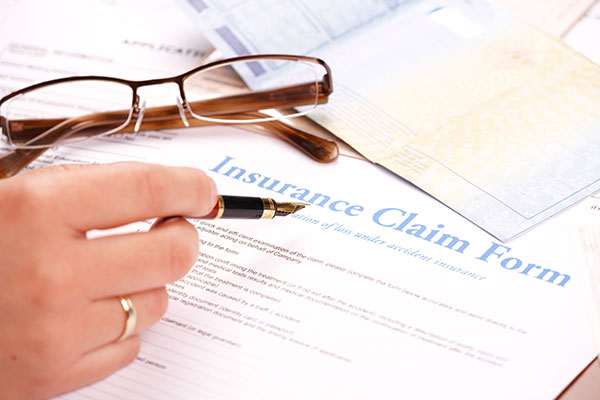
You will not be reimbursed for any losses resulting from negligence on your part, such as failure to protect and maintain your property.
In the unfortunate event of a natural disaster or an act of vandalism, it is the responsibility of the homeowner to take quick and efficient measures to prevent further damage to the property. Therefore, you will not be reimbursed for any losses resulting from failure to protect your home. It is recommendable to call a professional restoration company immediately after a disaster, as the experts will be able to salvage the remaining part of your property and prevent the damage from spreading. Besides, they will work in close cooperation with your insurance agent to ensure a smooth and beneficial claims process.
Intentional Damage Caused by a Homeowner
Intentional damage to the property caused by the homeowner, as well as any damage resulting from negligence on the part of the homeowner, is not covered by home insurance.
General Wear and Tear or Defective Construction
Home insurance does not cover general wear and tear as it is the homeowner’s responsibility to perform basic maintenanceMaintenance is the routine care, inspection, and repair of a... More and keep his/her property in a good condition. Manufacturer’s defects are not covered by a homeowner’s insuranceHomeowner’s insurance is a policy that provides financial ... More policy, either.
Have in mind that there are some more exclusions to homeowner’s insuranceHomeowner’s insurance is a policy that provides financial ... More coverage in case your home has been vacant for more than 30 days or if it is still under construction:
- vandalism and malicious mischief;
- freezing of pipes;
- theft, etc.
Insurance for structures used for business, as well as for any cars, vans, motorcycles, aircraft, boats, or other vehicles you own, must be purchased separately.
Bonus advice: Make sure you discuss each particular case with your insurance agent – even though your policy may not cover you for an excluded event, you may still be covered for losses resulting from it.
Bonus advice: During the COVID-19 pandemic, many insurance companies are offering relief programs to help homeowners cover the cost of their insurance. Check with your insurance company to see if they are offering relief during the COVID-19 pandemic. If not, you might want to consider a new homeowner’s insurance policy.

May your home be always safe and sound!
The standard homeowner’s insures, known as HO-2 policy, protects you against 16 specific issues including fire, theft, lightning, and wind or tornado. For an additional premium, you can purchase an “all risk dwelling” (HO-3) policy or an “all risk dwelling/contents” (HO-5) policy which will cover many more types of damages, but still not everything. Now, that you are familiar with the common insurance exclusions, it’s up to you to decide whether you need to purchase additional insurance in order to maximize your coverage or not.










